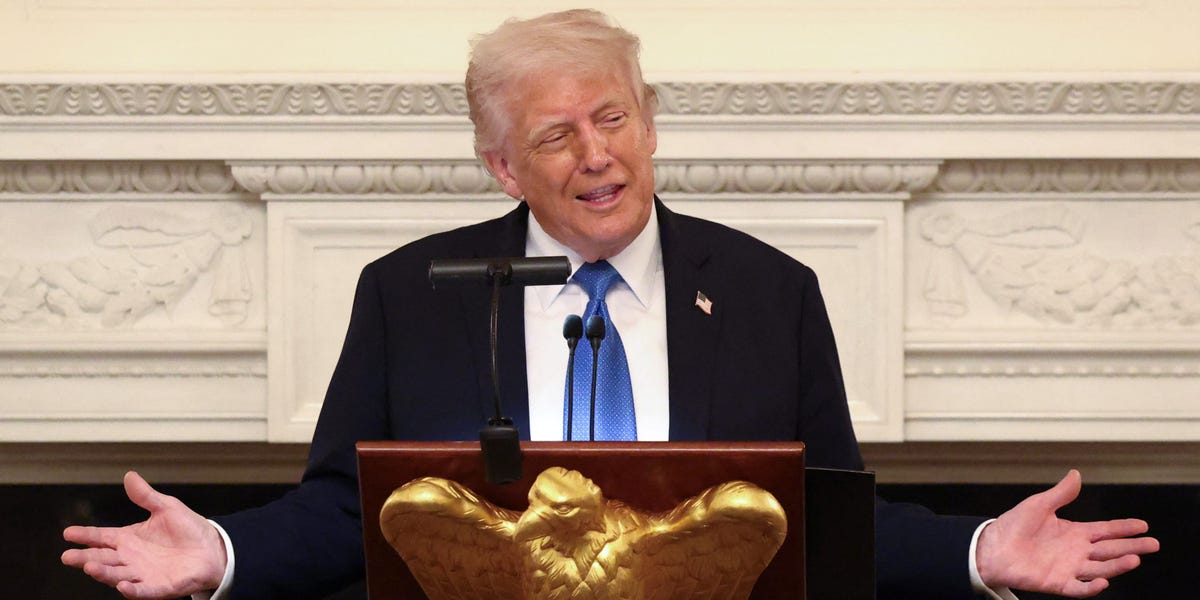August kicked off with a shocker, with Donald Trump firing the head of the Bureau of Labor Statistics after a less-than-rosy July employment report.
The move sparked prognostications about untrustworthy government data going forward and comparisons to China, which some believe is uninvestable due to issues with data quality.
Then why is the market unfazed as trading kicks off on Monday?
Stocks rallied to start the week, with the Dow up almost 500 points at midday and the Nasdaq Composite jumping as much as 2%. For now, markets are focused on other things, like the higher odds of a September rate cut after the employment picture suddenly soured.
“Obviously, the firing was unconventional. That’s pretty much everything with this administration compared to previous administrations, but at this point, there is so much private data that the market can look at other sources,” Paul Hickey, cofounder of Bespoke Investment Group, told Business Insider.
Apart from the BLS statistics that investors already parse, there’s a patchwork of private and public data, including ADP data, hiring and firing data from a range of consulting firms, and labor market sentiment indicators from sources like the Conference Board.
“There are private sources of data, and if they are moving in the opposite direction from the government data, then it becomes an indicator that something is off with the statistics,”Aleksandar Tomic, Associate Dean, Strategy, Innovation, & Technology at Boston College, told Business Insider.
Trump said Erika McEntarfer’s firing was justified and that the July data had been manipulated to make the administration look bad. He did not offer evidence for this claim, though White House economic advisor Kevin Hassett said the revisions in the data are “hard evidence.”
The July revisions were substantial, showing that the US added nearly 260,000 fewer jobs in May and June than had been initially reported. Trump and Republicans have also criticized earlier revisions, including last year’s that showed over 800,000 fewer jobs added in the 12 months leading up to March 2024.
The irony of Trump’s anger over the July jobs numbers is that the weak report has pushed up the odds of the September rate cut to nearly 90%, getting the president closer to seeing the Fed loosen monetary policy as he’s been demanding all year.
Please help BI improve our Business, Tech, and Innovation coverage by sharing a bit about your role — it will help us tailor content that matters most to people like you.
What is your job title?
(1 of 2)
What products or services can you approve for purchase in your role?
(2 of 2)
Continue
By providing this information, you agree that Business Insider may use
this data to improve your site experience and for targeted advertising.
By continuing you agree that you accept the
Terms of Service
and
Privacy Policy
.
Thanks for sharing insights about your role.
But for investors, things like the robust GDP report for the second quarter and solid corporate earnings, particularly among mega-cap tech giants, are boosting the outlook for the market even as Trump’s move stirs some uncertainty.
For Sergio Altomare, a former senior enterprise architect at the Fed, the next big question is who will replace McEntarfer at the helm of the BLS.
“I think the ultimate impact is going to take time to sort itself out, but I think really the immediate thing is, who gets appointed? What is their background? What does the data show? Is it dramatically different from what we’re seeing?”
Altomare said that it will be difficult to properly assess the impact of Trump’s decision on financial markets until these questions have clear answers.
Luckily for markets, some answers could come soon. Trump has said that in the coming days, he’ll nominate a new BLS chief, as well as a replacement for Fed Gov. Adriana Kugler, who resigned on Friday. Both positions require confirmation by the Senate.
It is also worth noting that some agree with the president’s decision. For his part, investing legend Ray Dalio said on Monday that he, too, would probably fire the BLS chief.
In a post on X, he described the agency’s process for making key economic estimates as “obsolete and error-prone,” with no plan to fix it.
“The revisions brought the numbers toward private estimates that were in fact much better,” Dalio said.

